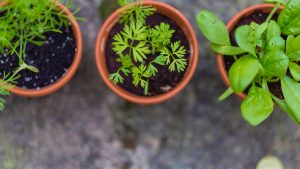
“Tips for Growing Delicious Strawberries at Home”
Tip#1 Choose the right variety:
There are many different varieties of strawberries, each with their own unique characteristics. Consider the climate in your area and the size of your garden when selecting the right variety for you. Some popular options include June-bearing, everbearing, and day-neutral varieties.
When selecting a variety, it’s important to consider the climate in your area. June-bearing varieties are typically the most popular, as they produce a large crop all at once, usually in late spring or early summer. Everbearing varieties produce fruit over a longer period, while day-neutral varieties can produce fruit all season long. Each variety has its own unique characteristics, so it’s important to choose one that will thrive in your area.
Another important consideration is the size of your garden. If you have a small space, you may want to choose a smaller variety that won’t take up too much room. Alternatively, if you have a larger space, you may want to choose a larger variety that can produce a larger crop.
Tip#2 Prepare the soil:
Strawberries thrive in well-drained, nutrient-rich soil. Before planting, work in plenty of organic matter, such as compost or aged manure, to improve the soil’s structure and fertility. A pH level between 6.0 and 7.0 is ideal for strawberries.
The key to growing healthy and productive strawberry plants is to start with good soil. Strawberries prefer well-drained soil that is rich in organic matter. Before planting, it’s important to add compost or aged manure to the soil to improve its structure and fertility. This will help to ensure that the plants have the nutrients they need to grow and produce a bountiful crop.
It’s also important to test the pH level of the soil to ensure that it is within the ideal range for strawberries. Strawberries prefer a slightly acidic soil, with a pH level between 6.0 and 7.0. If the pH level is too low or too high, the plants may not be able to absorb the necessary nutrients.
Tip#3 Plant at the right time:
The best time to plant strawberries is in the spring, after the last frost. This gives the plants enough time to establish a strong root system before the hot summer months.
When it comes to planting strawberries, timing is everything. The best time to plant is in the spring, after the last frost. This gives the plants enough time to establish a strong root system before the hot summer months. If you plant too early, the plants may be damaged by frost. If you plant too late, the plants may not have enough time to establish a strong root system before the heat of summer.
Another important consideration is the spacing of the plants. Strawberries need plenty of space to grow and produce fruit, so it’s important to plant them about 18-24 inches apart, with at least 3 feet between rows.
Tip#4 Water and fertilize regularly:
Strawberries need consistent moisture to produce a bountiful crop. Water the plants deeply and regularly, keeping the soil consistently moist but not waterlogged. Fertilize the plants with a balanced fertilizer every 4-6 weeks during the growing season.
Watering and fertilizing are crucial to the health and productivity of strawberry plants. It’s important to keep the soil consistently moist, but not waterlogged. This can be achieved by watering the plants deeply and regularly. A good rule of thumb is to water the plants once a week, if the weather is dry, or more if the weather is hot and dry.
In addition to watering, it’s also important to fertilize the plants regularly with a balanced fertilizer every 4-6 weeks during the growing season. This will provide the plants with the necessary nutrients to grow and produce a bountiful crop. It’s also important to follow the instructions on the fertilizer package, as over-fertilizing can be harmful to the plants.
Tip#5 Protect the plants from pests and diseases:
Common strawberry pests include slugs, aphids, and strawberry root weevils. Diseases to watch out for include verticillium wilt and powdery mildew. Keep an eye out for any signs of trouble and take action immediately if necessary.
One of the biggest challenges when growing strawberries is protecting the plants from pests and diseases. Common pests include slugs, aphids, and strawberry root weevils. These pests can cause damage to the leaves, fruit, and root systems of the plants. To protect your plants, it’s important to keep an eye out for any signs of trouble and take action immediately if necessary.
Diseases to watch out for include verticillium wilt and powdery mildew. Verticillium wilt is a fungal disease that causes the plants to wilt and die, while powdery mildew is a fungal disease that causes a white, powdery growth on the leaves of the plants. To prevent these diseases, it’s important to practice good garden hygiene, such as removing old leaves and runners, and avoiding overcrowding the plants.
Tip#6 Provide proper support:
As the plants grow and produce fruit, they will need support to keep the fruit off the ground and prevent disease. Use straw or hay to keep the fruit clean and dry.
As the strawberry plants grow and produce fruit, they will need support to keep the fruit off the ground and prevent disease. One of the best ways to provide support is to use straw or hay to keep the fruit clean and dry. This will help to prevent the fruit from touching the ground, which can attract pests and diseases.
Another important consideration is to remove old leaves and runners as they appear. This will help to keep the plants healthy and prevent pests and diseases from taking hold.
Tip#7 Harvest at the right time:
Strawberries are ready to harvest when they are fully red and plump. They should be easy to pull off the plant with a gentle tug. The key to harvesting delicious and juicy strawberries is to pick them at the right time. Strawberries are ready to harvest when they are fully red and plump. They should be easy to pull off the plant with a gentle tug. If the berries are still white or green, they are not yet ripe and should be left on the plant to ripen.
It’s also important to harvest the berries as soon as they are ripe, as they will not continue to ripen once they are picked. This will ensure that you always have a supply of fresh, delicious strawberries to enjoy.
Tip#8 Enjoy the fruits of your labor:
There’s nothing quite like the taste of a fresh-picked strawberry. Enjoy your delicious, homegrown berries in a variety of ways, such as in salads, on top of cereal, or simply eaten out of hand. Strawberries are also delicious when made into jams, jellies, and preserves.
After all the hard work of planting, caring for, and harvesting your strawberries, it’s time to enjoy the fruits of your labor. There’s nothing quite like the taste of a fresh-picked strawberry. Enjoy your delicious, homegrown berries in a variety of ways, such as in salads, on top of cereal, or simply eaten out of hand. Strawberries are also delicious when made into jams, jellies, and preserves.
Additionally, growing your own strawberries at home can also be a fun activity for the whole family. Children will love helping out in the garden, and it can be a great way to teach them about where food comes from and the importance of taking care of plants.
Lastly, strawberries are not only delicious but also packed with nutrients. Strawberries are an excellent source of vitamin C, manganese, folate, and potassium. They also contain antioxidants and phytochemicals that have been linked to a variety of health benefits, such as reducing the risk of heart disease, cancer and diabetes.
In conclusion, growing strawberries at home is a fun and rewarding experience that will not only provide you with delicious fruit but also teach you about gardening and give you healthy and nutritious food. Remember to choose the right variety, prepare the soil, plant at the right time, provide proper spacing, water and fertilize regularly, protect the plants from pests and diseases, provide proper support, harvest at the right time and enjoy the fruits of your labor. Happy gardening!
If you are interested in growing other fruits, check out these other articles: How to grow raspberries, How to grow dates, How to grow mango, How to grow pomegranate, How to grow pomelo, How to grow kiwi, How to grow currants, How to grow khaki, How to grow currants, How to grow cranberries, How to grow bananas, How to grow citrus, How to grow blueberries, How to grow blackberries, How to grow pineapples, How to grow lemons,












